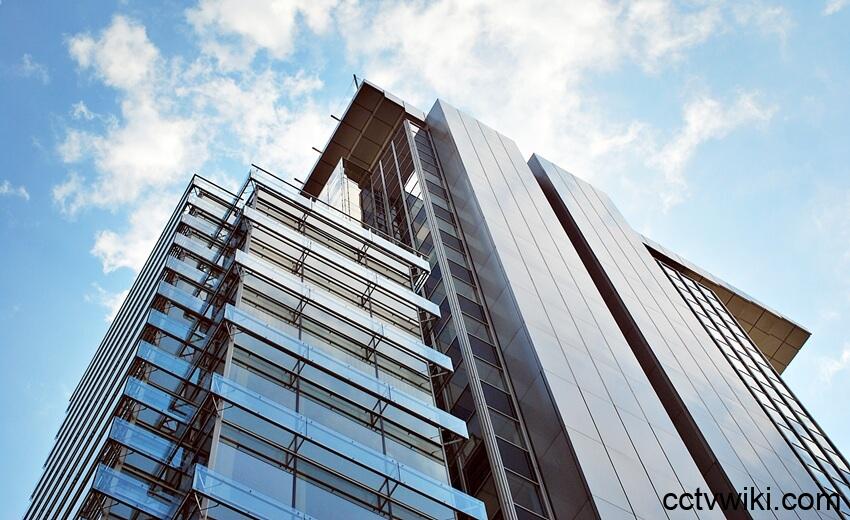In an era increasingly focused on environmental responsibility, the convergence of security and building management systems (BMS) is emerging as a pivotal strategy for creating greener, more sustainable buildings. This integration offers a pathway to optimize resource utilization, minimize waste, and significantly reduce energy consumption.
Globally, the rise of green buildings signifies a commitment to efficient resource management and environmental stewardship. By uniting security infrastructure with BMS, building operators can unlock new efficiencies and contribute to a more sustainable future.
“Modern security systems are often integrated into building management systems that coordinate lighting, HVAC, and access control. The access control system can help to optimize energy use, for example, powering down unused areas when no one is present,” notes James Clark, Director of Sales for EMEA and APAC at AMAG Technology.
Patrick Lim, Group Strategy Director at Ademco Security Group, highlights the advanced capabilities of modern security systems: “Just camera solutions alone can acquire crowd density, temperature, audio signatures, object classifications, and activity classifications. With native AI and analytics of more advanced security systems, traditional BMS just have to receive instructions or status data to activate the various lighting/HVAC scenarios. The game changer is dual use of these security sensors and adding some IOT sensors to upgrade to a smarter and more proactive building, rather than depending on static settings or reactive sensors.”
## How Security-BMS Integration Drives Sustainability
The synergy between security and BMS manifests in several key areas, each contributing to a building’s overall sustainability profile.
### Occupancy-Based Lighting and HVAC: Intelligent Energy Management
Access control systems generate a wealth of building occupancy data that, when shared with the BMS, enables dynamic adjustments to lighting, HVAC, and other subsystems. Clark explains, “The access control system can help to optimize energy use, for example, powering down unused areas when no one is present. Smart sensors can also automatically adjust lighting and climate control based on room usage.” This responsiveness ensures that energy is used only when and where it’s needed, eliminating waste.
### Optimizing Space Utilization: Smarter Building Design
Efficient space utilization is another cornerstone of building sustainability. By integrating security data into the BMS, owners gain valuable insights into how space is being used. “By integrating security data into the BMS system, owners can optimize room scheduling, redesign office layouts and support hybrid work strategies by ensuring the right amount of workspace is available when needed,” says Clark. This data-driven approach allows for smarter building design and resource allocation.
### Leak and Equipment Failure Detection: Proactive Prevention
Security sensors can also serve as early warning systems, detecting water leaks, gas leaks, or equipment failures. The BMS can then respond by sending alerts or shutting off the affected equipment. “Modern security systems can help detect leaks and equipment failures through smart sensors, integrated data monitoring, video analytics and automated alarms based on certain conditions. This can turn traditional security networks into early warning systems that protect people and the planet,” Clark emphasizes.
Edison Chen, Service Head of Smart Buildings, Smart Infrastructure at Siemens Taiwan, illustrates the tangible benefits with real-world examples.
“With Siveillance Security System integration with Desigo CC Building Management Platform, when personnel access office spaces using card readers, infrared sensors trigger the activation of HVAC and lighting systems. When people leave, the system automatically shuts down HVAC and lighting to save energy,” he explains. “Our Building X Security Manager Cloud Platform enables users to access controlled areas using mobile devices, reducing the need for physical ID card production and waste.”
Chen adds, “Through these integrated solutions, Siemens demonstrates how modern security systems can contribute to both building security and sustainability goals while providing valuable operational insights.”
## Installation Best Practices: Building a Sustainable Security System
Proper setup and installation are crucial for maximizing the sustainability benefits of security systems.
“Start by designing for efficiency end to end. A streamlined PoE layout with efficient switches – set per-port power limits, use a centralized UPS, and enable Energy-Efficient Ethernet – lets you power cameras, readers, and controllers without waste. On the video side, choose low-power cameras with edge analytics and record what matters,” advises Clark. “Be thoughtful about what you buy. Favor hardware with Environmental Product Declarations and modular, repairable designs. You’ll cut embodied carbon, extend service life, and reduce truck rolls, delivering a more sustainable, cost-effective security operation without compromising performance.”
Lim recommends leveraging cloud or hybrid architectures to minimize on-site equipment. “In large facilities, there can be up to 10 or more enterprise grade application and storage servers; these servers consume a lot of energy (easily 7,000 to 15,000 kWh annually), and by putting all or part of the servers in the cloud the energy consumption is not just transferred out but handled by way of more efficiently-run clusters of utility computing,” he says.

